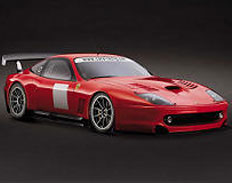COPPELL, Texas—You don’t have to tell NVision that reverse engineering is nothing new. The 20-employee firm based here has been using laser scanning to reverse engineer parts for everything from the aerospace industry to the medical industry since 1993.
“The automotive industry used to be big,” lamented VP Steve Kersen, “but less so recently.”
However, despite the concept being relatively mature, new advances in laser scanning technology have made it a more viable business and NVision has recently begun blogging about its reverse-engineering projects and trying in general to raise the practice’s profile.
“The accuracy [of the laser scanners]has improved so much over the years,” said Kersen, “along with the software to manipulate the millions of data points you collect. You can do it much more efficiently and cost-effectively than you could 10 years ago.” Also, as the systems become more portable, NVision has expanded its geographic footprint, covering most of North America and dipping into South America from time to time.
“The market seems to be growing,” Kersen said. “There are still tons of parts around from the days of CAD, or pre-CAD, and the drawings disappear and scanning is just the most efficient way [to create a new part]. Especially when they have free-form surfaces, it makes a huge difference using scan or tactile probes.”
NVision has its own branded suite of scanners and software and focuses on integrated solutions when it gets into product sales. “We sell equipment or we do the work for them,” Kersen said. “We bring together components. Some we make, some we outsource. A lot of clients will use our services, and if they do it enough, they’ll buy the equipment themselves.”
As just one example of a job he took recently that only recently has become possible, Kersen noted that the company has been reverse engineering heart stents. “New people are finding us,” he said. “Medical people much more so than in the past.”
Regardless, Kersen feels much more needs to be done to raise awareness of current capabilities. “We still do trade shows after 20 years and people come by the booth and they’re blown away,” he said. Nor can you expect the end user to see the possibility of the reverse engineering.
“We were doing a show with Porsche once,” Kersen remembered, “and on the first day we were scanning a truck. The second day we were scanning a car and people came by and went, Oooh, you can do cars, too?”
In fact, NVision has found itself working in all kinds of different areas and applications. “We get involved in robots, character recognition–they tell us what they need and we take care of it for them.”






